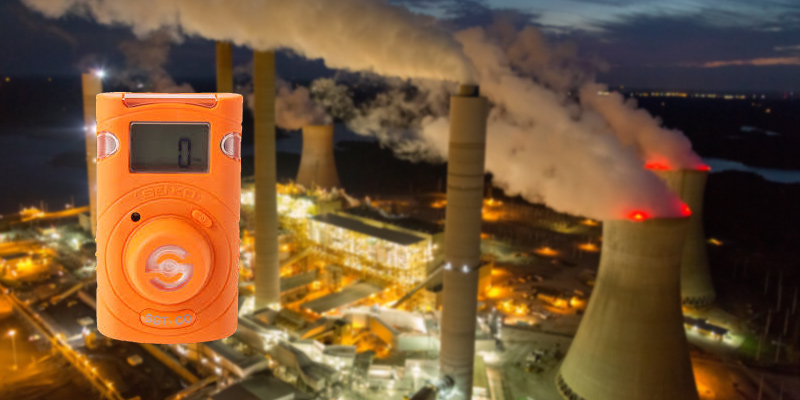Power generation plants are always busy injecting power into the economy that we rely upon for our daily usage. We have never paid attention to the power generation process or the workers involved in natural gas, hydro, or coal conversion. Should we take it for granted or explore how the process works and what the workers need? The latter statement makes more sense, and that is why we are writing this article. The tirelessly working individuals in power generation plants must use safety equipment due to a wide range of hazards associated. We will discuss why to use safety equipment in power generation plants here. Walk with us to know more!
Reasons to use safety equipment in power plants:
Modern-day power generation plants are exposed to several workplace hazards. Workers are never risk-free while working in these plants, and hence using safety equipment becomes necessary. Plant management should consult safety equipment suppliers to avail the best safety equipment available in the market. Having the equipment will bring the following positives.
1. Ammonia (NH3) Gas detection:
As discussed, power plants are never free of hazards. Toxic gases are always wandering in the air and, if went undetected, can cause serious problems. A highly reactive family of Nitrogen Oxides (NOX) can react with Nitrogen, water, or other gases to produce unwanted elements. These elements could cause health problems for workers involved in the industry.
One proven technique to reduce NOX emission is selective catalytic reduction (SCR). Power generation plants should use this technique to stay compliant with EPA standards. It is necessary to monitor the following areas for NOX emission.
- Bullet tanks
- Pumping
- Vaporization
- Injection areas
2. Hydrogen (H2) Gas detection:
Hydrogen gas is often considered the cooling agent for generators and is produced on-site. However, an excessive concentration of this gas can cause environmental and health problems. Seal-oil system fires are often caused by excessive Hydrogen concentration in the workspace, and hence, they must be detected using H2 sensors.
The unscheduled shutdowns of generators can also be associated with excessive H2 concentration. To protect workers from invisible fires, the gas must be detected. The battery rooms in power generation plants produce sufficient Hydrogen, and hence, detectors must be placed there to avoid any inconvenience.
3. Carbon Monoxide (CO) Gas detection:
The incomplete combustion process releases toxic gas into the air known as carbon monoxide CO. Power generation plants release sufficient CO into the atmosphere due to Boiler casing leaks and smoldering coal. The gas must frequently be monitored using CO sensors as it can be dangerous if gone undetected.
Carbon Monoxide CO is commonly monitored in coal tunnels, bunkers, tipper rooms, and hoppers. The detection helps in identifying pre-fire conditions and hence, avoids any mishap at the workspace. The role of CO sensors can be extravagant, especially when powder river basin coal is in use.
4. Oxygen (O2) Gas detection:
Power generation plants have enclosed or confined spaces where an excess of Oxygen concentration can cause health problems. Workers in these plants often encounter issues like Oxygen depletion or displace Oxygen. The management needs to look after such problems and take corrective measures. One step they must take is to contact safety equipment suppliers in UAE and buy gas detectors and sensors.
CEM shelters and confined spaces in power plants are often monitored for Oxygen gas concentration. It would be best to place O2 sensors in these areas to ensure safety.
5. Natural Gas detection:
Methane is considered the main component of natural gas. It is also the major volatile in coal, and it must be taken care of during combustion. Natural gas or methane is often monitored in power plants in areas like silos and bunkering. More often, the gas is looked for along with Carbon Monoxide CO.
Methane can pose an explosive hazard in power plants, and that is why it must be detected. Management should use modern-day equipment to monitor methane-sufficient areas to avoid any mishap at the plant.
6. Flame detection:
Fire and flame detection systems in power generation plants could be of utmost importance. The optical flame detection in ambient areas can detect fires and flames to avoid a catastrophic situation in the plant. As soon as the fire is detected, it will lead to the sudden shutdown of main operations.
The optical flam detection system is used near associated burners. The system could help avoid the unpleasant situation in the plant.
Make your power plant safe with safety equipment!
Industrial hazards can be fatal and must be looked after on time. The management should take proactive safety measures to ensure worker’s and workspace safety. It would be best to contact proficient safety equipment suppliers and place your order for modern-day gas detectors and sensors for your power plant!
Tags: ammonia gas detectionflame detectionnatural gas detectionPower generation plantssafety equipment suppliers

